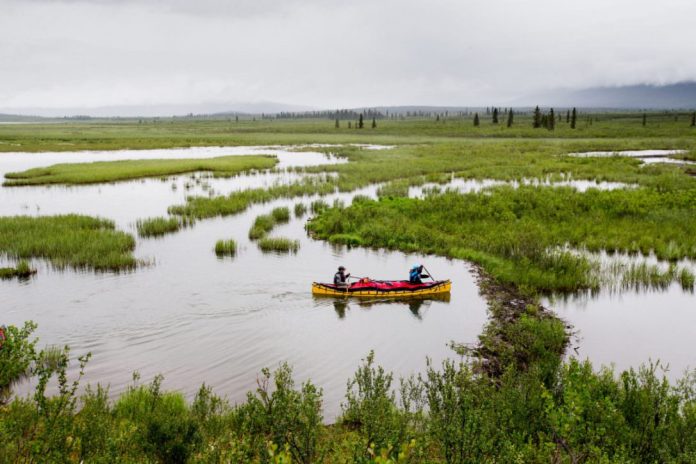Researchers on Tuesday published new evidence that old or even ancient carbon, pulled out of the atmosphere and stored in the bodies of plants hundreds or thousands of years ago, is being set loose again from soils in the Arctic region.
The ongoing thawing of Arctic permafrost may pose a serious risk to Earth’s climate due to vast amounts of ancient carbon dioxide poised to be ejected into the atmosphere.
Having conducted radiocarbon dating of the contents of rivers and lakes in Canada’s Northwestern Territories, scientists at VU University Amsterdam have detected an increase in dissolved carbon and carbon dioxide; some samples are over 2,000 years old.
Over the course of many centuries, the frozen soil of the Arctic Circle came to contain an abundance of carbon, harboring vast quantities of dead plant matter that was locked in the permafrost and thus prevented from decaying completely.
Now, however, as the permafrost thaws, these carbon deposits are starting to decompose and are being released into the atmosphere as methane and carbon dioxide further exacerbate problems related to global warming and climate change.
“I would say if you’re looking at anything pushing several hundred years old to a thousand years old, then you have to start wondering whether that should be coming out of this kind of system,” study lead Joshua Dean said.
He also added that while his research cannot prove with 100 percent certainty that the situation in the Artic has changed to a point that might result in a growing amount of carbon being released in the air, the results were a definitely “a warning sign for the future.”















